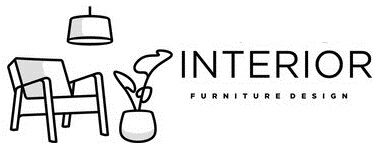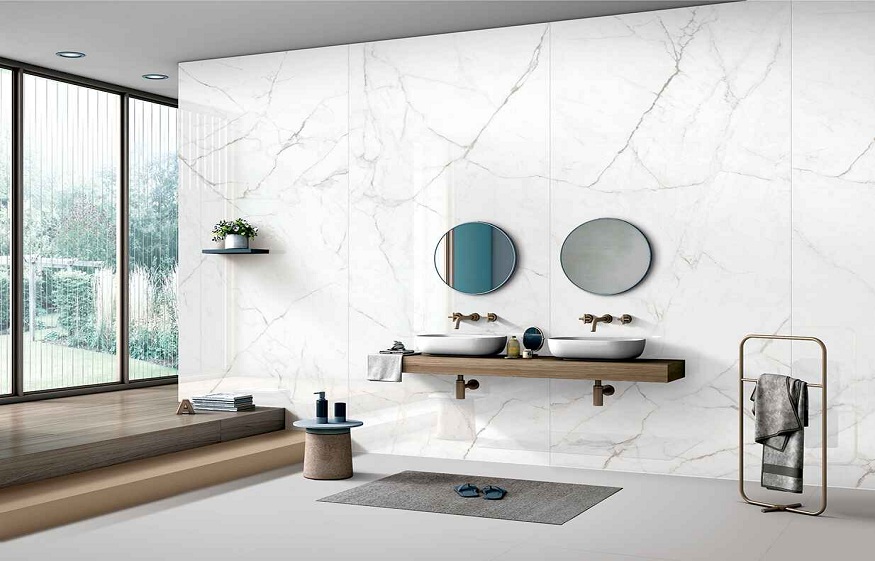A coating available for all tastes
When it comes to tiles, the range is quite vast, whether in terms of formats, shapes, reliefs or patterns. Some tiles perfectly reproduce concrete, natural stone or wood. They are available in a beautiful range of colours, from white to black, including all the bright and pastel shades, and with a glossy or matte finish.
Apart from earthenware, which is specifically designed for wall installation, bathroom walls can accommodate porcelain stoneware tiles, cement tiles, mosaics or natural stone.
So how do you choose the right bathroom tiles?
Everything will depend on its location: on the floor or on the wall, in the whole room or only on a part. The choice of bathroom tiles being as we have seen very vast, you can vary the type and the colors to create a room in every way unique. Your choice will also be oriented according to the typology of your interior.
For a small bathroom , for example, avoid black or dark tiles, opt for white to visually enlarge the space. Many products exist on the market and you will find bathroom tiles in light tones, both modern and original, without too much difficulty. You will also have to turn to a thin covering so as not to make the room look smaller. Another possibility: install bathroom tiles only on one or two walls, at the shower level for example.
For a guaranteed decorative effect, think about harmonizing your choice of bathroom tiles with that of your taps. Have you fallen for a designer style? Then go for a glossy coating, with a lacquered finish to accompany the taps in your bathroom. On the other hand, for a bathroom with a country look, we will favor more natural tiles on the floor and the wall, the finish will be matte or satin.
Before getting to the heart of the matter and reviewing the materials, effects and installation of the tiles that will help make your bathroom unique, here are some examples of tiled bathrooms created by our partner plumbers and installers to give you some ideas…
Floor tiles: the parquet effect trend
In small apartments, it is advisable to unify the floor coverings to give an impression of greater space and this partly explains the reasons for this craze for parquet effect tiles, parquet being always a preferred choice for the renovation of living rooms. Whether you are Scandinavian or industrial, modern or vintage, you will always find a type of wood, a color that will match your interior decoration.
For parquet-effect tiles, it’s the same, you’re bound to find the style that suits you! Adopting parquet-effect bathroom tiles also means being able to coordinate your bathroom furniture with your floor, and for example, recall the wood color of the frame of a mirror or the washbasin used.
By choosing this floor covering, you adopt the luxurious and noble look of wood without having to worry about difficult maintenance. Porcelain stoneware can be cleaned without any problem, does not risk being damaged or scratched like a traditional parquet floor, and above all, is perfectly suited to a damp room.
bathroom parquet tilesParquet-effect tiles, the warm side of wood… without the maintenance!
A special pose for a tailor-made style
In a bathroom, large tiles give a feeling of space. 30 x 30 cm tiles are perfect for creating visual effects by playing on colors and finishes. It all depends on the visual effect you are looking for for the room. There are several types of installation for floor tiles: straight, diagonal or staggered.
Straight installation is the most classic: the tiles, of the same format, are aligned along a line perpendicular to one of the walls.
Diagonal installation creates a perspective effect and makes the bathroom appear larger than it is : the tiles are installed at right angles, along one of the diagonals of the room.
The staggered, offset or herringbone installation gives rhythm: each row of tiles is offset, in relation to the previous one, by half or a third of the width of the tile.
For more complex installations, it is better to first lay the tiles without using glue, so that you can correct them if necessary. This is called “dry laying”.

